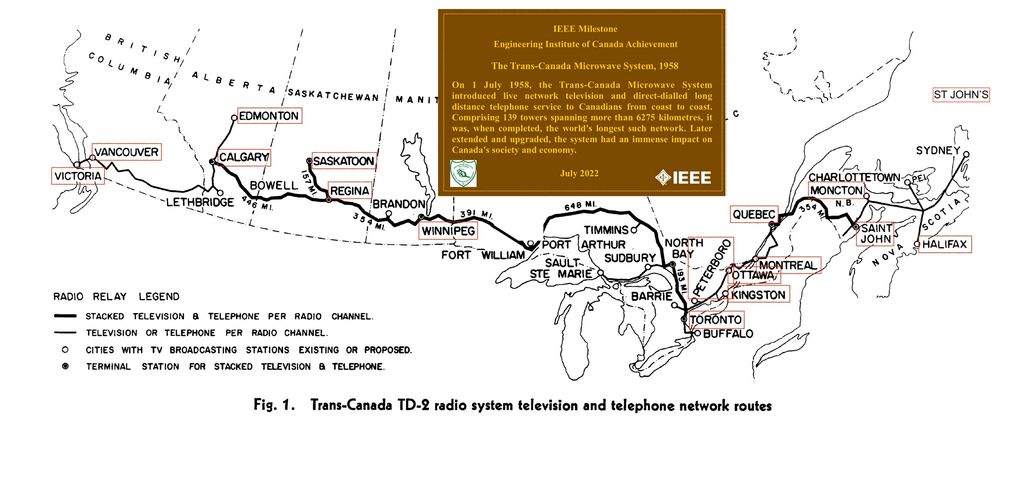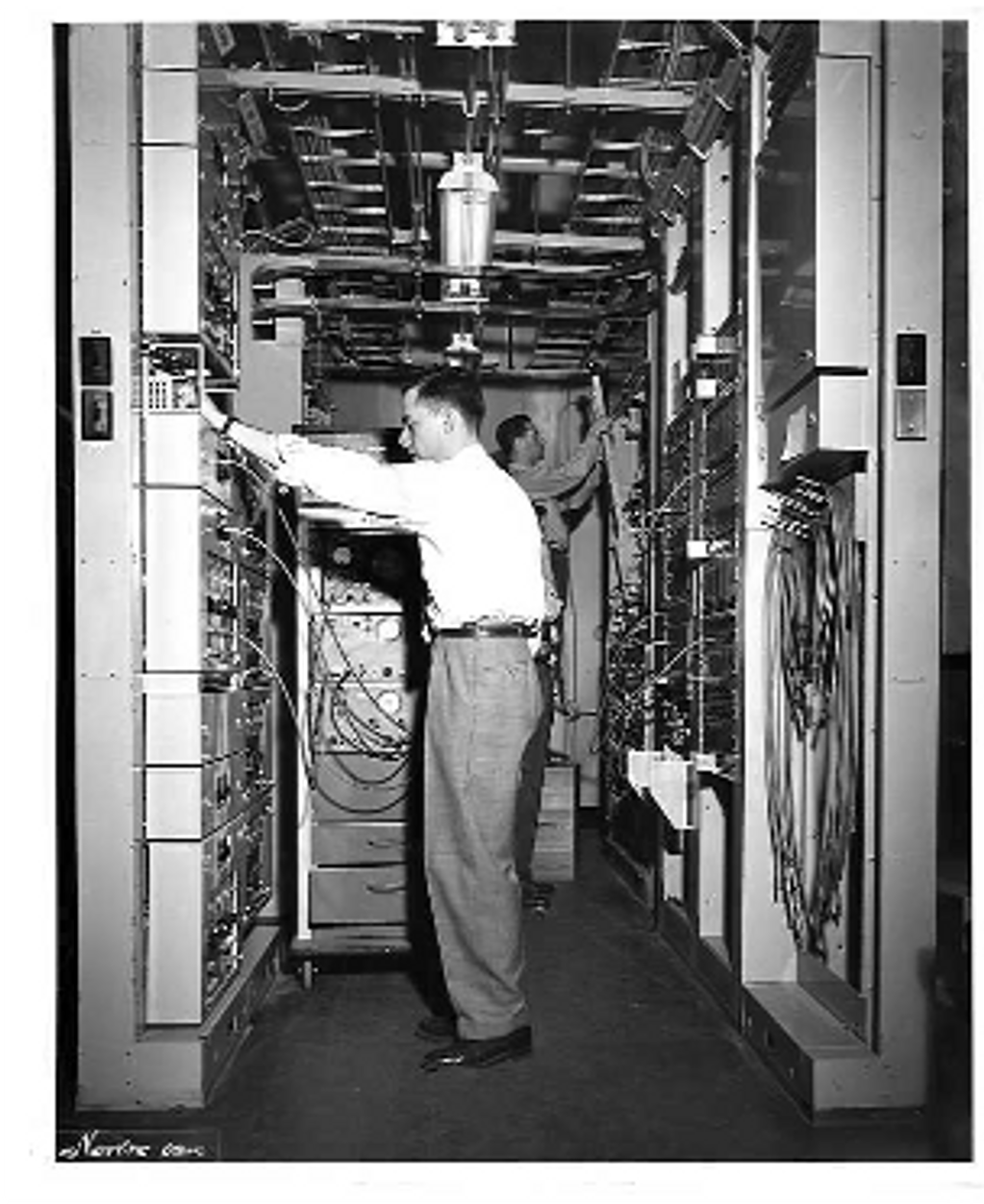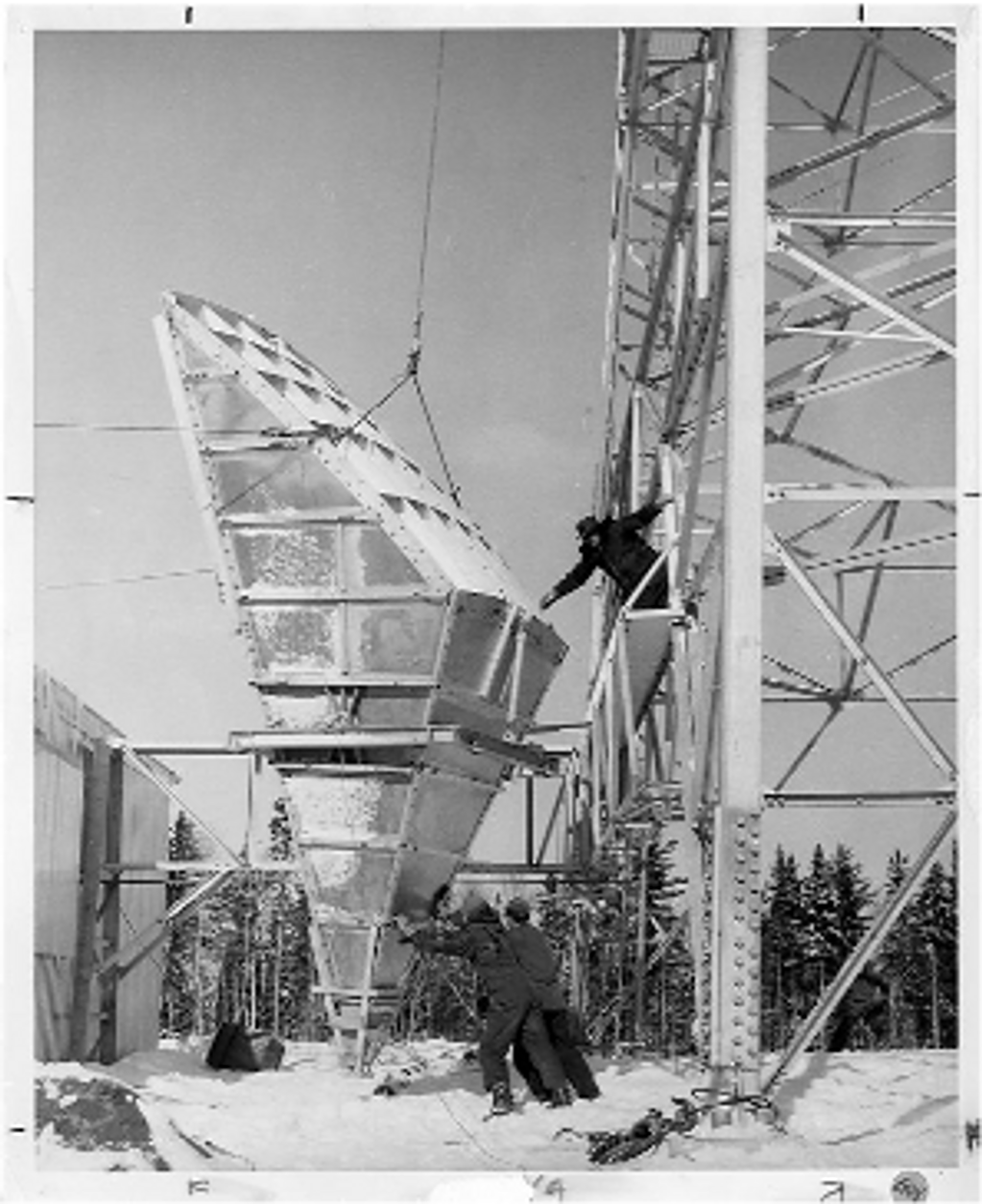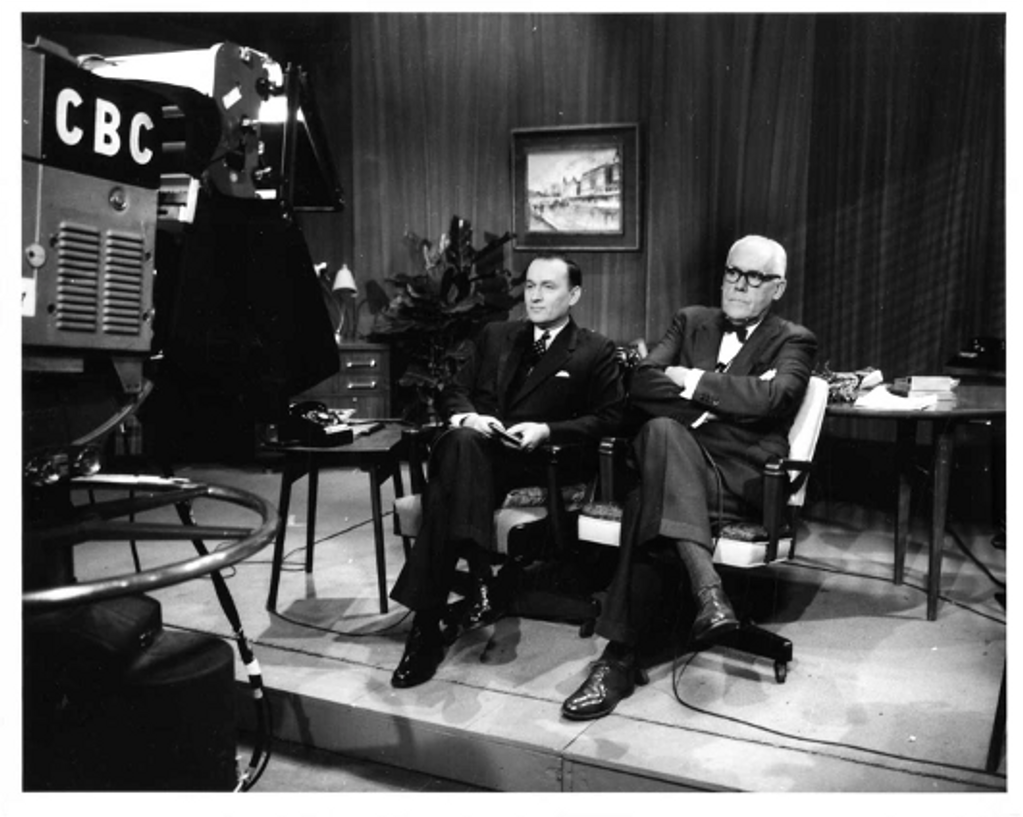Trans Canada Microwave System, 1958
 IEEE Canada joins the Engineering Institute of Canada, the Canadian National Committee of the International Union of Radio Science, Bell Canada, TELUS, and SaskTel in recognizing completion of the Trans-Canada Microwave System in 1958 as one of the greatest engineering accomplishments in Canadian history.
IEEE Canada joins the Engineering Institute of Canada, the Canadian National Committee of the International Union of Radio Science, Bell Canada, TELUS, and SaskTel in recognizing completion of the Trans-Canada Microwave System in 1958 as one of the greatest engineering accomplishments in Canadian history.
Watch for our major media event, coming in Fall 2022.
IEEE Canada News Release – Trans-Canada Microwave System
The Trans-Canada Microwave System History Project
The Trans Canada Microwave System History Project is an effort to reach out to the thousands of Canadian engineers with recollections and memorabilia of the system and preserve these in a digital archive to be jointly administered by IEEE Canada and the Canadian National Committee of the International Union of Radio Science (CNC-URSI).
Do you have memories or memorabilia concerning the Trans-Canada Microwave System to share? Drop us a line at historian@ieee.ca !
Photo Gallery – All photos courtesy of the Bell Historical Collection
The photo gallery contains several images of the Trans Canada Microwave System courtesy of the Bell Historical Collection, all rights reserved.
Trans-Canada TD-2 radio system television and telephone network route

 A-17988-S – A snow-covered TD-2 tower near Creston, B.C., 1959.
A-17988-S – A snow-covered TD-2 tower near Creston, B.C., 1959.
 A-23731 In Ottawa, Bob MacDonald (left) adjusts the equipment which links the microwave system to long distance and television facilities, 1953.
A-23731 In Ottawa, Bob MacDonald (left) adjusts the equipment which links the microwave system to long distance and television facilities, 1953.
 A-13018 Microwave radio relay tower on top of the Adelaide-Elgin building, Toronto, 1953.
A-13018 Microwave radio relay tower on top of the Adelaide-Elgin building, Toronto, 1953.
 A-23727 Construction crew, Olive, Ont., 1956.
A-23727 Construction crew, Olive, Ont., 1956.
 A-14859-S – Canada’s first coast-to-coast closed circuit press conference with Thomas Eadie, President of Bell Canada, at right, June 18, 1958.
A-14859-S – Canada’s first coast-to-coast closed circuit press conference with Thomas Eadie, President of Bell Canada, at right, June 18, 1958.
IEEE Canada/CNC-URSI Working Paper 2021-16
This academic working paper summarizes the historical significance of the Trans-Canada Microwave System, what obstacles had to be overcome to complete it, and what sets it apart from similar achievements.
From Sea to Sea: The Trans-Canada Microwave System, 1958
Prof. David Michelson IEEE Canada and CNC-URSI Historian
dmichelson@ieee.org
dmichelson@ursi.ca
On 1 July 1958, the Trans-Canada Microwave System introduced live network television and direct-dialled long distance telephone service to Canadians from coast to coast. Comprising 139 towers spanning more than 6275 kilometres, it was, when completed, the world’s longest such network. Later extended and upgraded, the system had an immense impact on Canada’s society and economy.
The Canadian National Committee of the International Union of Radio Science joins IEEE Canada, the Engineering Institute of Canada, Bell Canada, TELUS, and SaskTel in recognizing completion of the Trans-Canada Microwave System in 1958 as one of the greatest engineering accomplishments in Canadian history.
The recognition will also kick off the Trans Canada Microwave System History Project, an effort to reach out to the thousands of Canadian engineers with recollections and memorabilia of the system and preserve these in a digital archive to be jointly administered by IEEE Canada and the Canadian National Committee of the International Union of Radio Science (CNC-URSI).
Historical Significance
Canada is the second largest country in the world with the majority of its sparse population located along a narrow swath that spans not four but six time zones – over 7000 km. During the twentieth century, Canada became a leader in telecommunications technology out of necessity as it sought ways to shrink these vast distances [1][2].
The post Second World War era was a pivotal time in Canadian history. The pre-war economy had been based largely on agriculture and natural resources. The industrial base that had taken root during the war was ready to expand but was hampered by the relatively limited transportation, power and communications infrastructure. Canadians took up the challenge and many signature engineering achievements, including construction of civilian aviation infrastructure, the St. Lawrence Seaway,and the Trans-Canada Highway, and the beginning of large-scale development of hydroelectric power, occurred during this era.
The telephone was invented by a Canadian, Alexander Graham Bell, and the first long distance call was made by Bell over a distance of about 6 miles, between Brantford and Paris, Ontario on 10 August 1876. Canada rapidly adopted the new technology and, by the mid-twentieth century, its per capita usage was among the highest in the world [1] [3]. The vast distances in Canada and the reliance on copper wires and, in some cases, HF and VHF radio, to link urban centres resulted in a long-distance telephone network that offered limited capacity, poor voice quality, and long call set up times, but which charged high user fees. A growing population and booming economy ensured that the volume of long-distance calls in Canada doubled during the first post-war decade. At the same time, television had begun to emerge as an important source of news and entertainment, but there was no way to connect individual television stations into a national network that would permit programming to be shared in real time.
The development of microwave radar by the United Kingdom, the United States and Canada during the Second World War had led to the emergence of microwave electronics as a field of technology. The vastly higher operating frequencies associated with microwave systems offered orders of magnitude increases in bandwidth and capacity compared to those used by the systems then commonly used for inter-city links. Canada was among the first countries to use microwave relay systems for inter-city links. In 1948, a link between Nova Scotia and Prince Edward Island with a capacity of 23 telephone lines was opened. In 1952, a radio system between Halifax and Saint John, New Brunswick, with a capacity of 46 telephone lines was opened. In 1953, a microwave relay system that linked Buffalo, NY in the U.S. to Toronto, Kingston, Ottawa, Montreal, and Quebec City with sufficient capacity to carry both television and telephone signals was opened.
With the operational feasibility of inter-city microwave relays in Canada proven, the effort shifted to overcoming the various financial and regulatory hurdles that made deployment of a coast-to-coast telephone and television network a truly daunting task. Thomas Eadie, the President of Bell Canada from July 1, 1953 to July 31, 1963, emerged as a strong voice in the discussions that followed. In the end, the task of building the first transcontinental microwave network in Canada fell to Bell Canada and other member companies of the Trans-Canada Telephone System. On 8 March 1955, construction of the national system began. The essential elements of the overall system are described in three papers published between July 1956 and November 1957 [4]-[6].
Just over three years later, on 18 June 1958, operation of the entire network was successfully demonstrated. Officially opened on 1 July 1958 via a live coast-to-coast television broadcast called “A Memo to Champlain,” the Trans-Canada Microwave System comprised 139 towers spanning over 6275 kilometres. The event was commemorated by announcements placed in leading periodicals during the weeks that followed, e.g., [7], and in a 22-page pamphlet entitled “From Sea to Sea: A record of events leading to an historic moment in Canada’s progress – the formal opening, on July 1, 1958, of the coast-to-coast microwave network of the Trans-Canada Telephone System” [8] . It was, at time of completion, the longest microwave relay network in the world.
The new system provided a high-grade large channel capacity that replaced primitive long-distance technology in use at the time, such as multiplexed circuits carried on cables and even on open-wire lines. The new system enabled an order of magnitude improvement in long-distance circuits, and notably, network television.
A few years later, the Trans-Canada Microwave System was extended to Newfoundland. The original system operated in the 4 GHz band. During the next few decades, it was upgraded considerably. The capacity of the original 4 GHz system was increased and later 7 GHz radio links were added. In the 1970’s, 8 GHz digital radios which re-used the existing 4 GHz antenna system were added. CNCP Telecommunications constructed a competing system in the early 1960’s. The Trans-Canada Microwave System was finally decommissioned in the late 1990’s after four decades of service with its functionality taken over by satellites and fibre-optic cables.
No single engineering achievement of the past century has had a greater impact on Canada, its society, and its economy, and, indeed, individual Canadians, than completion of the Trans-Canada Microwave System. By introducing direct-dialled long distance telephone service to Canadians from coast to coast, it immediately transformed the way that Canadians communicated with each other for both business and pleasure.
Its impact on Canadian television was just as important. As a publicly-owned and operated national broadcasting network, the Canadian Broadcasting Corporation had a strong mandate to build and cultivate Canadian culture by providing original content to all Canadians. For CBC to realize the full potential of television as a national medium, they needed access to a high capacity network. Through the CBC and its national television network, the Trans-Canada Microwave System shaped how Canadians saw ourselves as people and as a nation.
The significance of the Trans-Canada Microwave System was recognized at the time, as evidenced by contemporary media accounts including a 15-minute feature entitled “Microwave of the Future,” that was broadcast as part of The Canadian Scene on CBC Radio on 23 Sep. 1956 [M1] and a preview of the dedication ceremony entitled “The Marvellous Microwave Network,” that aired on CBC Television on 30 Jun 1958 [M2].
Many of the engineers who had learned their craft through their involvement with the Trans Canada Microwave System went on to play key roles in the subsequent deployment of other long-haul microwave relay networks such as the PANAFTEL network that linked French Africa with Paris, and various microwave relay networks in South America. They also played pivotal roles in the development of domestic satellite communications technology including introduction of the Anik communications satellite system in the early 1970’s, and the first cellular telephone networks in Canada in the early 1980’s.
Challenges
Although the use of microwave relays in regional networks had been well established by the mid-1950’s, the additional challenges associated with deploying a transcontinental microwave relay network were numerous. The number of towers required to span the great distances involved meant that the cost of deploying such a network would be at least an order of magnitude higher than that of a regional network. Multipliers would be needed to account for the added difficulty of installing towers in wilderness and mountainous areas far removed from infrastructure.
No single entity could afford to build such a network. In 1952, Bell Canada concluded that microwave relay networks were the preferred technology for connecting Canadian urban centres. In 1952, the Canadian Broadcasting Corporation expressed interest in having Bell Canada and CNCP Telecommunications build a nationwide relay network for radio and television signals but Bell Canada declined the opportunity. Shortly thereafter, Thomas Eadie was appointed president of Bell Canada and led the effort to build a consortium led by Bell Canada and the Canadian Broadcasting Corporation, and members of the Trans-Canada Telephone System, that could finance such a project and, at the same time, win regulatory approval from the government to proceed. The controversey and debate that accompanied the effort to form the consortium has been described by Babe [1] and others.
The costs associated with construction and deployment over a wide variety of terrain which ranged from the rolling hills of eastern Canada, to the flat prairie of western Canada, to the rugged mountains of British Columbia, were considerable. Finding tower sites with line-of-sight to adjacent sites was extraordinarily difficult. Some sites were far removed from roads and other infrastructure. There were no satellite photographs, and available topographical maps were limited in detail. The achievements of the land surveyors were amazing.
Although the TD-2 microwave radios that were built by Northern Electric (later to become Northern Telecom, and later still, to be shortened to Nortel) was based on a design licensed from AT&T, numerous modifications were made to reduce costs and to ensure that the network met the needs of its Canadian stakeholders. Some of these are described in a paper by Curtis et al. entitled “The simultaneous transmission of television and telephone multiplex over a single microwave channel on the trans-Canada TD-2 system” [9].
Unique Aspects
At the time of completion, the Trans Canada Microwave System was the longest microwave relay network in the world. The number of microwave relay towers required to span the great distances involved in a transcontinental system meant that the deployment cost was at an order of magnitude higher than that of a regional network.
Installing microwave towers in wilderness and mountainous areas far removed from roads and other infrastructure was necessary in a transcontinental system but also added to the difficulty and, ultimately, the cost.
Due to the manner in which Canada’s population is distributed, it could be argued that the impact of the system on Canada, its society and its economy was greater than that experienced by other countries that had or would deploy such a system.
As part of the Canadian Engineering Centennial in 1987, the Engineering Institute of Canada appointed an eight-member jury to identify the ten most exceptional and representative feats of Canadian Engineering’s First Century (1887-1987) from 110 projects [10] [11]. Each project, besides demonstrating the obvious engineering advance, had to have catalyzed major economic and social change within its own era and must have posed “extraordinary demands in organization and administration” and, within the context, “be identified by its original character, ingenuity, creativity and true uniqueness.” The Trans-Canada Microwave System was selected as one of ten most exceptional projects with the following citation:
“This network of microwave transmission is the backbone of our system of telecommunication from sea to sea. Sponsored by the Canadian Broadcasting Corporation and executed bv the seven members of the Trans- Canada telephone system, this network was constructed in three years involving 139 towers (ranging in height from 9.14 m to 106.68 m) over a 6,276.27 km track from Sydney, Nova Scotia to Victoria, British Columbia. Newfoundland was linked later. The system is designed to provide distortion-free images in telecasting. Site marking, construction of access routes, trials, and the feed-back to the final erection of the galvanized steel towers developed a Canadian engineering know-how that is recognized internationally and resulted in Canadian involvement in the PANAFTEL network linking French Africa with Paris.”
In 1993, Historica Canada featured the Trans Canada Microwave System in a Heritage Minute video entitled “Le Réseau” or “The Network” [M3].
Joint designation of the Trans-Canadad Microwave System as an IEEE Milestone and Engineering Institute of Canada Landmark builds on EIC’s efforts of 35 years ago and Historic Canada’s efforts of twenty years ago and help to raise awareness of this important achievement amongst both the public and the profession.
References
[1] R. E. Babe, Telecommunications in Canada, University of Toronto Press, 1990.
Summary – A richly documented and perceptive account of how Canada developed its communications and information technologies with strong emphasis on economic and policy issues.
[2] Historical Timeline of Canadian Telecommunications Achievements, presented at the ITU World Telecommunication Standardization Assembly (WTSA) (Montréal, Québec) 27 Sep – 6 Oct 2000.
URL: https://www.itu.int/newsarchive/wtsa2000/english/media/timeline.pdf
[3] M. Sheldon, “Telephone Service Across Canada,” Canadian Geographical Journal, vol. 52, no. 1, pp. 2–23, Jan. 1956.
Summary – A popular account of the state of the telephone system in Canada in the mid 1950’s.
[4] J. W. Noyes, G. Gaudet and S. Bonneville, “Development of transcontinental communications in Canada,” Transactions of the American Institute of Electrical Engineers, Part I: Communication and Electronics, vol. 75, no. 3, pp. 342-352, July 1956, doi: 10.1109/TCE.1956.6372537.
Abstract – There are three major communication agencies in Canada. The Trans-Canada Telephone System furnishes long-distance telephone service to the public across Canada and also provides privately leased telephone and telegraph circuits. The Canadian Pacific Railway Company and the Canadian National Railways each furnish commercial telegraph service throughout Canada, and they also provide a number of privately leased circuits, both telephone and telegraph.
URL: https://ieeexplore.ieee.org/stamp/stamp.jsp?tp=&arnumber=6372537&isnumber=6372524
[5] S. Bonneville, “The Canadian transcontinental microwave system,” Transactions of the American Institute of Electrical Engineers, Part I: Communication and Electronics, vol. 76, no. 4, pp. 473-477, Sep. 1957. doi: 10.1109/TCE.1957.6372326.
Abstract – In a paper reviewing the subject of transcontinental telephone communications in Canada reference was made to the long-term relief plans of the Trans-Canada Telephone System. It was pointed out that this envisaged a coast-to-coast radio-relay system carrying television and L-carrier facilities. The construction of this system is now well advanced and is scheduled for completion in 1958.
URL: https://ieeexplore.ieee.org/stamp/stamp.jsp?tp=&arnumber=6372326&isnumber=6372306
[6] S. Bonneville, “The Trans-Canadian microwave system,” Electrical Engineering, vol. 76, no. 11, pp. 967-967, Nov. 1957, doi: 10.1109/EE.1957.6442806.
Abstract – The subject of transcontinental telephone communications in Canada was recently reviewed in an article entitled, “Development of Transcontinental Communications in Canada,” by J. W. Noyes, G. Gaudet, and S. Bonneville, which appeared in AIEE Communications and Electronics, July 1956, and in which reference was made to the long-term relief plans of the Trans-Canada Telephone System. It was pointed out that this envisaged a coast-to-coast radio relay system carrying television and L carrier facilities. The construction of this system is now well advanced and is scheduled for completion in 1958.
URL: https://ieeexplore.ieee.org/stamp/stamp.jsp?tp=&arnumber=6442806&isnumber=6442795
[7] Trans-Canada Skyway – Opened July 1st 1958 (advertisement), Canadian Broadcaster, 10 July 1958, p. 21.
Summary – An advertisement prepared by Northern Electric that summarizes the essential aspects of the system and its significance.
[8] Trans-Canada Telephone System, “From Sea to Sea: A record of events leading to an historic moment in Canada’s progress – the formal opening, on July 1, 1958, of the coast-to-coast microwave network of the Trans-Canada Telephone System.” Bell Telephone Company of Canada, 1958. 22 pp.
[9] H. E. Curtis, U. C. P. Strahlendorf and A. J. Wade, “The simultaneous transmission of television and telephone multiplex over a single microwave channel on the trans-Canada TD-2 system,” in Transactions of the American Institute of Electrical Engineers, Part I: Communication and Electronics, vol. 77, no. 2, pp. 185-190, May 1958, doi: 10.1109/TCE.1958.6372781.
Abstract – This year, a TD-2 radio relay system will span Canada from Halifax to Victoria. Certain sections of the network are designed to handle television and telephone circuits simultaneously on the same broad-band channel. It is the purpose of this paper to describe the transmission and terminal-equipment aspects which make this new technique possible and economically attractive.
URL: https://ieeexplore.ieee.org/stamp/stamp.jsp?tp=&arnumber=6372781&isnumber=6372772
[10] T. Speers, “Exceptional Canadian Engineering Feats Saluted,” The Manitoba Professional Engineer, Feb. 1987, p. 3.
Summary – A description of efforts to recognize the ten most significant Canadian engineering achievements of the past century as part of the Canadian Engineering Centennial Celebration 1887-1987.
[11] N. R. Ball, “Mind, Heart and Vision”: Professional Engineering in Canada 1887 to 1987, Canada Science & Technology Museum Corporation, Sep. 1988, 183 pp.
Multimedia
[M1] R. Hunka and A. Smith, “Microwave of the Future,” Canadian Scene, CBC Radio, 23 Sep. 1956, Duration: 14:53
Abstract – It’s literally the wave of the future. Canada’s new microwave relay network will spell the end for fuzzy, static-ridden long-distance telephone conversations. Microwaves, another form of wireless radio communication, mean improved telephone connections and instant TV transmission. As the final microwave relay tower connecting Winnipeg and Toronto is erected, a CBC reporter asks Winnipeggers what the microwave network will mean for them. “After all we’ve heard and read lately, this microwave must be a pretty wonderful thing,” says one.
https://www.cbc.ca/player/play/1757442872
[M2] R. Loring, “The marvellous microwave network,” Scan, CBC Television, 30 June 1958. Duration: 10:50
Summary – Preview of the live broadcast, “Memo to Champlain,” that officially opened the Trans Canada Microwave System on 1 July 1958.
https://www.cbc.ca/player/play/1674671105
[M3] “Le Réseau,” Canadian Heritage Minutes, 1993, https://www.historicacanada.ca/content/heritage-minutes/le-reseau
Abstract – Bell Canada’s Thomas Eadie leads the construction of a trans-Canada microwave network to carry television broadcasts and telephone calls across the country.
A version of this page is hosted by CNC-URSI at http://ursi.ca/tcms/.







